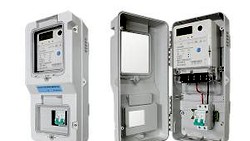Reflecting on the wisdom of the past can often illuminate the path to the future. It was Lord Kelvin, a pioneer in the field of measurement, who famously stated, "To measure is to know. If you cannot measure it, you cannot improve it." This principle is the driving force behind the current transformations within the energy sector
Electric utilities worldwide are installing smart meters at residential and commercial customer sites. These digital devices provide two-way communication between the utility and customer, enabling more accurate and frequent measurement of electricity usage. Smart meter rollout aims to equip utilities and customers with valuable data to enhance reliability, empower customer choices, and modernize ageing utility infrastructure.
Motivations for Smart Metering
Traditional electromechanical meters have served utilities reliably for decades but provide usage data only periodically during manual reads. With two-way communication over fixed networks or wireless connections, smart meters can automate reads down to sub-hourly intervals. More frequent metering enables several strategic priorities for utilities.
First, it allows for time-of-use and dynamic pricing programs to encourage shifting demand away from peak periods. Time-based rates reward customers who save energy when grid loads are highest. Analysis shows such programs can reduce peak demand by 5 % to 15 %, helping defer costly generation and infrastructure upgrades.
Accurate sub-hourly data also enables faster outage detection and restoration. Utilities use smart meter alerts instead of customer calls to pinpoint issues, often restoring power 15 to 30 minutes sooner on average. Faster response strengthens reliability perceptions while avoiding unnecessary truck rolls.
Smart meter investments additionally aim to streamline billing and collection processes. Automated reads eliminate human errors, resulting in a 97 % to 99 % billing accuracy rate. Remote disconnection and reconnection remove any need for dispatched field visits in many cases. Utilities anticipate long-term operational savings of 10 % to 30 % from such efficiencies.
Components and Operation of Smart Metering Systems
At the customer premise, digital smart meters continuously monitor power flows bi-directionally. Meters typically contain components for power quality monitoring, tamper detection, and two-way communications over power-line, licensed radio frequency bands or cellular networks. Utilities choose frequency depending on geography, building densities, and other factors.
Software platforms at the utilities manage meter data collection and distribution. Head-end systems collect reads from advanced metering infrastructure (AMI) field area networks via fixed routers or IP capabilities. Meter data management systems then process, store, analyse and distribute consumption information across utility departments for various purposes such as billing, forecasting, and outage detection algorithms.
An AMI network's backbone consists of collector points which receive signals broadcast by endpoints like smart meters, typically using 900 MHz or 2.4 GHz mesh network topologies for high coverage. Collectors pass data to head-end servers through secure private networks, often using T1 lines—which are dedicated telecommunication circuits that provide reliable and consistent data transmission at rates of 1.544 megabits per second—or broadband connections. System scalability and flexibility allow utilities to deploy and maintain connections to hundreds of thousands of endpoints across large service territories.

(symbol image, credit CLOU)
Benefits Emerging From Measurement
Early case studies demonstrate measurable gains from smart metering programs. Using interval data to pinpoint outages has streamlined response at many utilities. AMI also detects "blink outages" barely noticed by customers but equally impacting. Restoration now averages 25 minutes faster. Variable peak pricing paired with in-home displays encourages off-peak energy shifting and savings of 2% to 5% according to pilot participants.
Understanding load profiles at granular levels benefits planning and forecasting. System load research through smart meter data produces more accurate demand models to guide investments. Targeted energy efficiency programs also yield up to 15 % additional savings.
Challenges like data security and customer acceptance remain work-in-progress. However, as digitization transforms industries, accurate metering positions utilities and customers for success in the modern energy paradigm. Innovation springs from rich new insights and possibilities measurement unlocks. The future remains bright as this data drives efficiency and empowerment for all.
Takeaway
Smart meter rollout equips utilities and customers with a powerful tool – frequent, automated measurement. Early results validate strategies to strengthen service, shift peak demand, streamline operations and foster new energy choices. While challenges exist, advanced metering infrastructure demonstrates clear benefits and proves vital for a more resilient, sustainable and consumer-centric grid. As utilities, policymakers, and customers collaboratively address barriers, accurate metering will continue improving quality of life through a partnership focused on measuring to improve.
And remember, if you need assistance in implementing advanced metering infrastructure (AMI), smart meters or meter test solutions, don't hesitate to reach out to us. Our team is here to support you.
Thank you for reading. If you would like to share your thoughts, please feel free to leave a comment below. We value your feedback and are always eager to hear from our readers.
Until then, keep shining bright like a solar panel on a sunny day!






All comments are moderated before being published. Inappropriate or off-topic comments may not be approved.